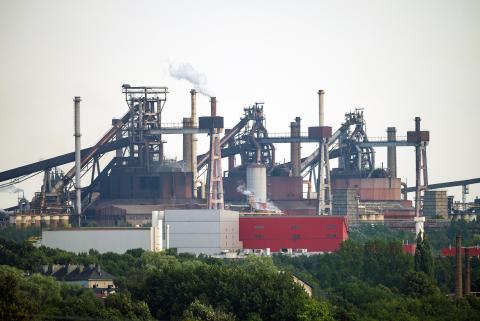IEEFA Update: Adani Stumbles Toward the Last-Chance Saloon
The prospect in the New Year for Adani’s proposed Carmichael coal-mine proposal has taken a bleaker-than-ever bent.
Following the Queensland government’s veto of the proposed A$1 billion government loan subsidy and after multiple Chinese banks ruled out funding the project, more nails have been driven into the project’s coffin. A month ago yesterday, Downer EDI, a major mine infrastructure and engineering firm, announced it had cancelled all “letters of award” relating to mine services and related infrastructure on Carmichael. Two days later it was reported that a senior project director for Carmichael, Peter Thomas, was leaving the company.
Adani is increasingly being “cut off” by its enablers much as a besotted customer is denied service by fed-up barkeeps.
That said, one should never underestimate a billionaire, particularly one as politically well-connected as Gautam Adani, who saw his net wealth more than double in 2017. The Adani family—if it chose to do so—could fund Carmichael with its own capital but has chosen not to for obvious reasons. The project is fraught with stranded-asset risk.
So while the odds are long, Carmichael could be resurrected. The project looked dead and buried in 2015, yet rose from the grave, and it is worth bearing in mind that the price of thermal coal is today double what it was at the end of 2015.
IF ADANI HAS ONE LAST ROLL OF THE DICE, it will likely involve coal rail-freight company Aurizon on a rail link from mine to port.
Aurizon’s strengths include that it is very well capitalized and is a deeply experienced coal rail operator. The company is also known for its expertise at maximizing its own value chain capture, something Adani would logically be worried about. With Adani increasingly desperate to secure the project’s future, Aurizon would be in a strong negotiating position and would drive a very hard bargain to protect itself from excessive capital risk.
Aurizon’s largely brownfield alternative rail link proposal would be predicated on access to very long-dated, subsidized government loan funding, even if at only 30 to 40 percent or A$300-400 million of that required by Adani’s greenfield rail proposal. Although the Queensland government vetoed a direct government loan to Adani, it has not ruled out a loan to Aurizon—even if it amounts to an Australian taxpayer-funded subsidy to a billionaire in India.
Adani faces other headwinds, among them the fact that Abbot Point was reported to have completed its US$500 million debt refinancing in December 2017, leaving a US$250 million debt refinancing with IDFC, the Indian banking giant, and a US$400-500 million State Bank of India subordinated debt refinance still required by November 2018. Standard & Poor’s has warned of a potential rating cut if Adani does not lock in refinancing soon.
ADANI IS HAVING TROUBLE AT HOME, TOO, where its latest quarterly financial results shows Adani Power stating that ongoing losses at its Mundra power plant have “impacted its financial viability.” Mundra has carried forward losses of US$1.8 billion while its current liabilities exceed current assets by US$1.9 billion. The plant has been transferred to a subsidiary pending a deal to sell a majority stake for a single rupee. Negotiations over this deal are ongoing.
One of the obvious ways of de-risking Carmichael would be to secure credible third-party coal offtake agreements. Adani has long championed its “pit-to-plug” strategy, with Adani Power—Mundra in particular—as a key off-taker of Carmichael coal. The dire circumstances of the Mundra plant make it ineligible as a viable Carmichael customer, in IEEFA’s view.
Adani Power’s net loss for the third quarter to December was almost double that of the corresponding period from 2016, with losses increasing to US$202 million. The year-to-date loss for the first nine months of the year now stand at US$227 million. These losses are driven by a reduction in revenue as the utilization of Adani Power’s coal-fired power plants dropped significantly. Utilization for the third quarter was 58 percent, down from 69 percent for the same quarter in 2016.
Meanwhile Adani Enterprises’ latest financial results show declining profits in coal mining while renewable energy profits are on the rise. Renewables are contributing nearly 12 percent of the company’s total profit before interest and tax (up from 1 percent in 2016).
Overall, the company reported net profit attributable to the owners of the company of US$90 million for the first nine months of the year, down 26 percent on the same period in 2016. In what has become a pattern of note, company in its most recent filings have gone silent on the Carmichael project.
Adani Enterprises has sunk A$1.5 billion (US$1.25bn) in Carmichael, and a write-off of the entire amount would equate to 50 percent of the company’s US$2.3 billion net shareholder equity. It seems unlikely there would be any buyers for the project should Adani try to dump it, so a 90-100 percent write-off would be required if it walks away.
Given that the company has so much invested—financially, ego-wise and perhaps emotionally —in Carmichael, it’s easy to see why it may well be angling for one last chance to slake its ill-advised thirst to push forward.
Tim Buckley is IEEFA director of energy finance studies, Australasia. Simon Nicholas is an IEEFA energy finance analyst.
RELATED ITEMS:
IEEFA Australia: More Wheels Fall Off the Adani Mega-Mine Train
IEEFA Asia: Price Increase Highlights Growing Risk to Coal-Import Economies












